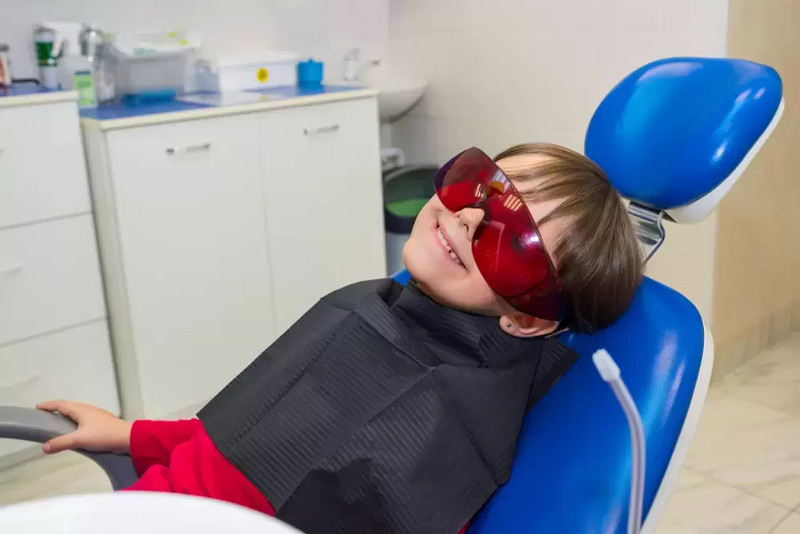


Many people feel anxious about going to the dentist, and sedation dentistry can be a great way to help ease those fears. It uses medication to help patients relax during dental procedures, and it's sometimes referred to as "sleep dentistry." However, patients are usually still awake during the procedure, with the exception of those who are under general anesthesia. The goal of sedation dentistry is to help patients feel more comfortable during their appointment so they can get the dental care they need. There are different types of sedation available, and your dentist can help you choose the right one for you based on your level of anxiety and the type of procedure you're having done.
Sedation dentistry is a safe and effective way to help patients relax during dental procedures. The use of medication helps to alleviate anxiety and makes the procedure more comfortable. Patients are usually awake during the procedure, although there are times when general anesthesia may be used. Sedation dentistry is sometimes referred to as "sleep dentistry," although that's not entirely accurate. The goal is to help patients relax, not to put them to sleep. This type of dentistry is ideal for patients who have a fear of needles, a low pain threshold, or who need to have multiple procedures done at one time. By using sedation dentistry, patients can receive the care they need without feeling anxious or uncomfortable.
It usually involves the administration of a sedative drug prior to and during the dental appointment. The most common type of sedative used is called a benzodiazepine. Benzodiazepines act on the central nervous system to produce a calming effect. They are typically taken orally, but may also be administered intravenously.
Sedation dentistry can be a great option for people who have anxiety or fear about going to the dentist. It can also be helpful for people who have a low pain threshold or who need to have a lot of dental work done at one time. There are different levels of sedation, from minimal sedation, which just takes the edge off, to general anesthesia, which renders you unconscious. Your dentist will discuss with you which level of sedation is right for you, based on your needs and medical history. Sedation dentistry is generally safe, but as with any medical procedure, there are some risks involved. Be sure to discuss these with your dentist before you undergo any type of sedation.
Minimal sedation, sometimes called "twilight sleep" or "conscious sedation," is a type of sedation that leaves you mostly awake during your procedure. You'll be able to follow simple commands, but you probably won't remember much about the procedure itself. The effects of minimal sedation wear off quickly, so you'll be able to go home soon after your procedure is over.
Deep sedation is a state of complete relaxation. You are on the edge of consciousness but can still be awakened. The goal of deep sedation is to minimize your awareness and anxiety during a medical procedure. Deep sedation may be used for procedures that are painful or uncomfortable, such as a root canal. Deep sedation is different from general anesthesia, which makes you unconscious and unable to respond to commands.
With moderate sedation, also known as conscious sedation, you'll remain awake during the procedure but may not be able to remember much of it afterward. You'll likely slur your words when speaking and may feel sleepy. The good news is that you won't feel any pain during the procedure.
General anesthesia is a type of medication used to make you completely unconscious during surgery. It's usually given through an IV in your arm, and it works by causing you to become very sleepy and disconnecting your brain from your body. This disconnection is what allows you to have surgery without feeling any pain. Once the surgery is over, the anesthesia is reversed and you wake up. You may feel groggy and disoriented for a little while afterward, but the effects will eventually wear off.
Inhaled minimal sedation, otherwise known as "laughing gas", is a popular form of sedation for dental procedures. You breathe nitrous oxide through a mask that's placed over your nose. The gas helps you relax and your dentist can control the amount of sedation you receive. The gas tends to wear off quickly, which is why this is the only form of sedation where you may be able to drive yourself home after the procedure.
IV sedation is one option that can be used for a variety of dental procedures. With IV sedation, you receive the sedative drug through a vein, so it goes to work more quickly. This method allows the dentist to continually adjust the level of sedation. That means that you can be kept comfortable throughout the procedure, even if it takes a while. And because IV sedation is so effective, it's often used for procedures that might be painful or complex.
This type of sedation dentistry uses oral medication to help people relax during dental procedures. Depending on the dose, it can range from minimal to moderate. For minimal sedation, you take a pill, typically Halcion, which is in the same drug family as Valium. The pill is usually taken about an hour before the procedure. It will make you drowsy, but you'll still be awake. A larger dose may be given for moderate sedation. This is the type most commonly associated with sedation dentistry. Some people become groggy enough from moderate oral sedation to fall asleep during the procedure. But they usually awaken easily when called and are able to resume their normal activities within a few hours.
When you receive deep sedation or general anesthesia for a medical procedure, you will be given medications that will make you either almost unconscious or totally unconscious. You will be deeply asleep during the procedure and cannot easily be awakened until the effects of the anesthesia wear off or are reversed with medication. With deep sedation, you may still be able to respond to commands from your healthcare provider, but you will not be aware of what is happening around you. With general anesthesia, you will not be able to respond to commands and will not be aware of what is happening around you. Deep sedation and general anesthesia are both safe and effective.